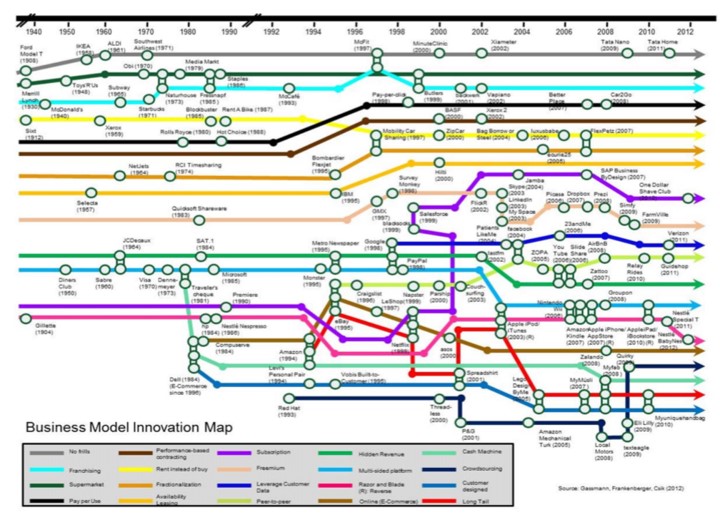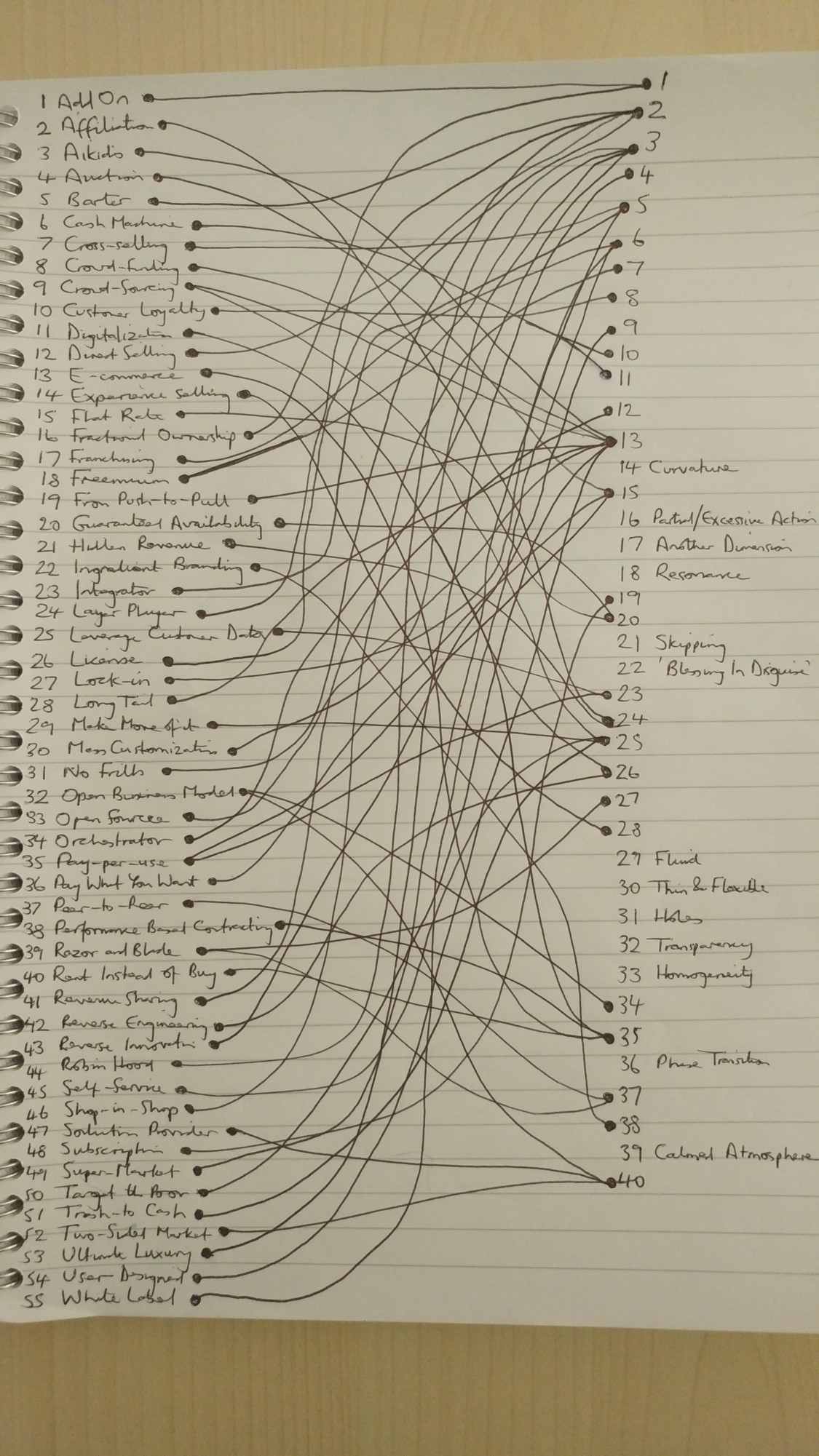
I’ve always been a sucker for inventive strategy taxonomies. One that’s been on my radar for a while has been the ’55 Business Model Patterns’ output from the University of St Gallen (https://www.thegeniusworks.com/wp-content/uploads/2017/06/St-Gallen-Business-Model-Innovation-Paper.pdf). Essentially, each pattern the St Gallen authors identified represents a step-change jump strategy made during successful business innovation attempts. As can be seen from the above image, the authors have done a really nice job of mapping such innovations.
Finally – thanks to a fortuitous parallel job – I’ve had the opportunity to compare the 55 St Gallen patterns with the TRIZ Inventive Principles. Of which, of course, there are only 40… meaning that there must be some kind of taxonomy mismatch contradiction. Especially in light of the fact that the patterns and the Principles are intended to do the same basic job. Here’s the result of my analysis:

…from which it is possible to conclude that what the St Gallen researchers have found is a somewhat partial subset of the total number of step-change jump strategies that are (so far) universally known to exist. Thirteen of the forty Inventive Principles have no corresponding entry in the list of St Gallen Business Model Patterns.
One possible hypothesis we can draw from this discrepancy is that none of the thirteen is relevant in a business model step-change context. This one can be rather swiftly dismissed since it is eminently possible to use any of the thirteen unused Principles to provoke business step change ideas that seem, following a short experiment on my part, to be self-evidently valid.
Another possible hypothesis is that the St Gallen work provides us with some kind of prioritisation model based on the number of times each strategy has been used to deliver a successful business innovation. This is perhaps more credible, albeit, the St Gallen research appears to have considered hundreds of case study examples rather than the millions that can be found in TRIZ. Following through this frequency correlation hypothesis, nevertheless, reveals that the most commonly used Patterns are strongly correlated to the most frequently used Inventive Principles (35, 2,13, 25), so there may well be some useful insight here.
From a TRIZ perspective, finally, we might question whether the St Gallen work adds anything to the story. They certainly haven’t found anything provocation-wise that the TRIZ researchers hadn’t picked up on several decades previously. But one thing I think they have done well is created some short, punchy titles for the patterns that are somewhat more evocative than those found in the TRIZ Inventive Principle taxonomy. The parallel job I’m trying to finish off is a re-issue of the TRIZ playing cards we did a long time ago. Just before we go to print with those cards, I’m wondering whether there’s any merit in exploring the ‘evocative name’ direction. If only because my deck of cards requires a taxonomy structure of 52 rather than 40 or 55.
